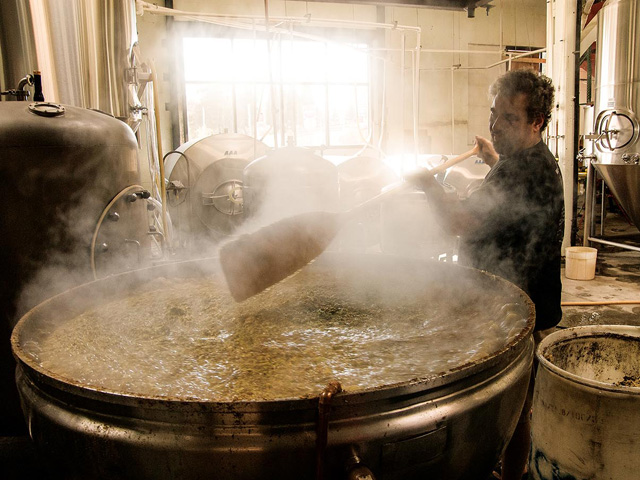Market Matters Blog
Stillage Disposal Is a Challenge for Kentucky Distillers
Kentucky's whiskey distillers have expanded by 250% in the last 10 years and produce 95% of the world's bourbon, but have a growing problem: What to do with the overwhelming supply of Distiller's Spent Grains (DSG), also known as stillage, that have been used to make distilled spirits?
The situation was discussed recently at the 25th annual Distillers Grain Symposium held in Louisville, Kentucky on Oct. 25-26.
Distillers use large amounts of grains like corn, rye, wheat and barley to create bourbon, Kentucky's signature spirit, and other whiskeys. That creates a lot of byproduct distillers refer to as DSG, or stillage, noted the University of Kentucky, home to James B. Beam Institute for Kentucky Spirits. The drastic expansion of bourbon production has not yet resulted in investment in dewatering technology, leading to large quantities of whole stillage.
Many of you are familiar with distillers dried grains (DDG) and distillers dried grain with solubles (DDGS) that are a major co-product from the production of ethanol made from corn. Ethanol plants have driers and large storage sheds and most of their coproduct is sold dried because it has a longer shelf life than wet distillers grains (WDG). DDG/DDGS sales at ethanol plants is close to 25% of a plant's margin. As for spent grains from whiskey distilleries, nearly all of it is given away at no cost to farmers.
Larger distilleries have invested in equipment to dry out whole stillage and make it more portable, but smaller craft distillers don't always have the funds for that, noted Brad Berron, director of research for the Beam Institute. "With Kentucky producing 95% of the world's bourbon, spent grains are a significant issue in our state," said Berron, who coordinates the research activities within the University of Kentucky's James B. Beam Institute for Kentucky Spirits.
P[L1] D[0x0] M[300x250] OOP[F] ADUNIT[] T[]
For many years, livestock producers have been primary users of stillage for feeding their herds, since it is a great source of protein and energy for cattle. Dairy farmers have a harder time getting to distilleries in a timely manner because Kentucky's dairies are in the southern part of the state, while the distilleries are in the center part. Also, some distilleries are constructed in urban areas with few cattle nearby to utilize the stillage as feed. DDGS has a very short shelf life and must be used quickly, or it will go bad, especially in the heat, and in turn, will lose the nutritional value. Stillage contains close to 93% water, which makes it challenging to transport and feed.
Distillery numbers are up 250% in the past 10 years, according to the Kentucky Distillers' Association. For every gallon of bourbon produced, approximately 10 gallons of stillage remains, with an estimated 96 million gallons of stillage produced in Kentucky annually. Currently, demand for stillage is declining as the supply of stillage continues to increase.
The Beam Institute partnered with the Kentucky Distillers' Association, Team Kentucky Cabinet for Economic Development, Distillers Grain Technology Council, KY Innovation, Kentucky Energy and Environment Cabinet and innovation incubated to sponsor the Distillers Grains Reverse Pitch. Through this effort, the collaborators sought new and innovative technologies and solutions from problem solvers, inventors, entrepreneurs, and businesses to expand uses of stillage.
The top six solutions from innovators and entrepreneurs presented their creative ideas at the Distillers Grains Symposium, where a judging panel decided the winner.
First place was given to BioProducts, a Louisville-based company won the Distillers Grains Reverse Pitch contest. BioProducts, founded by CEO Jagannadh Satyavolu, partnered with C&I Engineering Inc., another Louisville company, for its pitch. Satyavolu said by using whole stillage, which is mostly water, there's an opportunity to produce at least three profitable products.
"One of those is activated carbon, which is the preferred electrode material in supercapacitors, asymmetric batteries, and a variety of advanced batteries because of its high surface area and high purity. Imagine utilizing a Kentucky-grown technology, utilizing Kentucky's own resources of stillage to produce activated carbon for the battery application," Satyavolu said.
Fiber in the whole stillage can also be used to make xylose, a diabetic-friendly sugar substitute, while the protein can be used in animal feed, added Satyavolu. According to BioProduct's projections, with 75,000 gallons a day of whole stillage, those three streams could produce $2.5 million in annual revenue.
Berron said some low-tech solutions are already in play, and research within the university is already very multidisciplinary and comes from many colleges across campus. As for the reverse pitch contest, he said they were looking forward to all the submissions. "We can't wait to work with these folks and share our work with the state's distilleries."
Mary Kennedy can be reached at mary.kennedy@dtn.com
Follow her on Twitter @MaryCKenn
(c) Copyright 2021 DTN, LLC. All rights reserved.






Comments
To comment, please Log In or Join our Community .